Dental Care in Istanbul
If you're looking for top-notch dental care, then you've come to the right place. Istanbul is home to some of the best dental clinics in the world, offering a wide range of dental services and treatments to meet all your dental needs. Turkey is considered to have well-qualified hospitals and dentists, especially for dental care services.
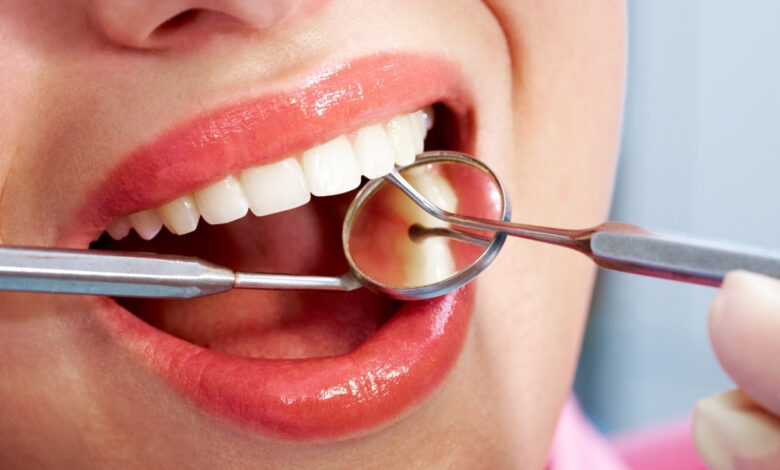
Turkey was the 6th in the worldas far as the number of foreign patients choosing to have dental care treatment. After 2021, Turkey made a huge jump and became the 2nd most attractive country. Istanbul is in the heart of health tourism attracting almost 70 percent of foreign patients. Turkey has long been an appealing country for tourism in general for both natural and historical beauties. In the past 20 years, the Turkish private sector invested in the health sector on a scale that no other country was even close to. Therefore, health tourism rapidly grewmaking up almost 20 percent of the whole tourism sector.In this article, we would love to answer all questions you might have about dental treatments and about dental care in Turkey, especially in Istanbul.
Why Choose Istanbul for Dental Care?
Before providing information regarding dental care treatments and the most suitable choices to reach these treatments in Turkey, explaining what level of training Turkish doctors have and what kind of requirements a clinic should have to address foreign patients are crucial questions. Firstly, the priority of foreign patients is to have a better insight into what to expect from Turkish clinics and doctors if they are to acquiredental treatment in Turkey.For that reason, it can be troublesome to find the best option for their needs. The first question a foreign patient would have is thequality of the treatmentthey would receive. To gain these patients’ trust, any service provider is responsible for giving details of their services. Before making your decisionIstanbul.com is here for you to ease your process because we understand that subjects concerning health necessitate long thinking time. Therefore, this article is written to save you from hours of search. You can just fill out the form below to find out the best dental clinic in Istanbul the best for your needs.
Dentistry in Turkey
Being a dentist in Turkey is a highly regarded occupation and most of the students are straight A students in high schoolbefore going to a university. The curriculum of dentistry education includes both theoretical coursework and clinical training. Students learn about various dental specialties, such as oral surgery, orthodontics, prosthodontics, periodontics, endodontics, and pediatric dentistry.
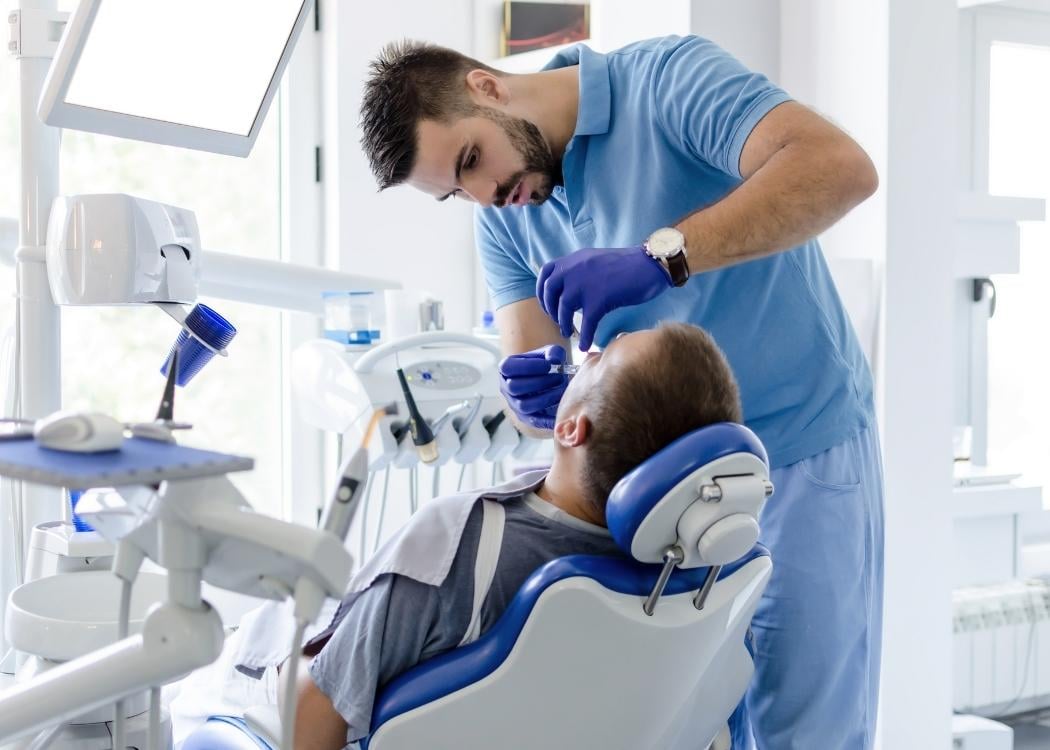
Practical training is an essential component of the dentistry program. Students typically have the opportunity to work with patients under the supervision of experienced dentists at university clinics or affiliated hospitals. The language of education in half of the universities is English in these programs. This factor is important especially for non-Turkish speaker patients because having the treatment in a language that a person knows is much more comfortable than being in the operation room with a translator. After a strict education, Turkish dentists should pass a universally accepted test to start their career and study fortwo more years to specialize in one subjectso most of the clinics in Turkey provide patients with a group of doctors who handle a part of the full treatment to give better services.
Health tourism is an officially accepted phenomenon in Turkey and the clinics that wish to address foreign patients undergo strict regulations and are constantly audited by government institutions. A huge number of the clinics in Turkey have international accreditations.
Other than the quality of the services, cost efficiency makes Turkey a popular destination for health tourism. The main reason for this is that dental clinics in Turkeymay have lower overhead expenses, such as facility costs and administrative expenses, compared to clinics in other countries. These savings are often passed on to patients in the form of lower treatment fees. Also, with the currency difference added to the geographical proximity, Istanbul is the perfect place to be treated!
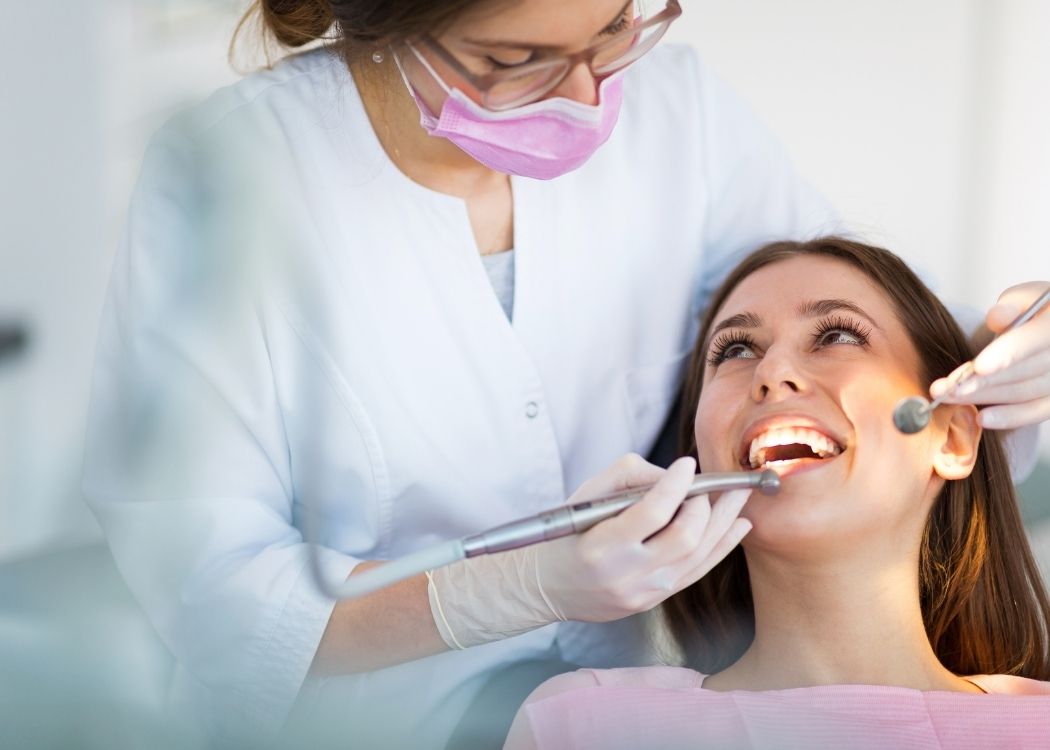
Also, for foreign patients, the exchange rate of their home currency against the Turkish Liracan play a significant role in making dental treatments more affordable. Other than these factors The Turkish government has been actively promoting medical and dental tourism, offering incentives to both patients and healthcare providers. This can result in competitive pricing for dental services.
Choosing the Best Options for Dental Treatment in Turkey
After making sure that you would receive a quality and cost-efficient service. You should consider your treatment options and the service provider should give you a detailed explanation of your procedure. Here are some questions you should be asking your doctor.
What Brand of Implant You are Planning to Use?
There are thousands of implant brands in the world and brand names make a considerable difference. Remember that quality implantsshould endure for life. Although it is not guaranteed that any implant to keep this promise statistically some brands proved themself significantly more reliable brands than others. Recommended brands are listed below and you should research them and ask your doctor to use one of them to your dental care professional.
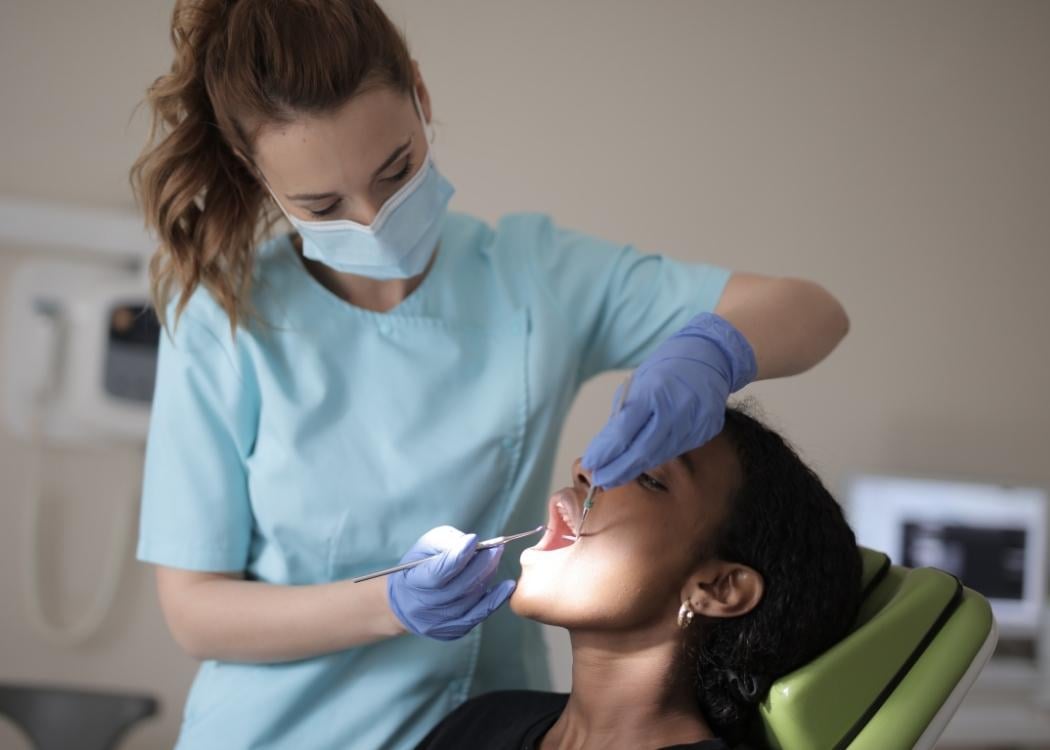
Straumann:Straumann is a Swiss-based company and one of the most recognized brands in the dental implant industry. They have a long history of producing high-quality dental implants with excellent success rates.
Nobel Biocare:Nobel Biocare, based in Sweden, is another leading dental implant manufacturer known for its innovative and reliable implant systems.
Zimmer Biomet:Zimmer Biomet is a global medical device company that offers a range of dental implant solutions with a good reputation for quality and durability.
Dentsply Sirona:Dentsply Sirona is a well-known dental equipment and technology company that provides a variety of dental implant products.
BioHorizons: BioHorizons is a US-based dental implant manufacturer recognized for its advanced implant designs and biocompatible materials.
MIS Implants: MIS Implants, headquartered in Israel, is a significant player in the dental implant market, offering a range of implant solutions.
Which Crown is More Suitable for My Needs?
After having your implant, you should wait for your gums to restore themselves. Then you should choose which crown type is more suitable for you. There are several types of dental crowns, each designed to address specific dental issues and provide varying degrees ofaesthetics and functionality. Dental crowns are custom-made caps that cover the entire visible portion of a damaged or weakened tooth, restoring its shape, size, strength, and appearance. Here are some common types of dental crowns:
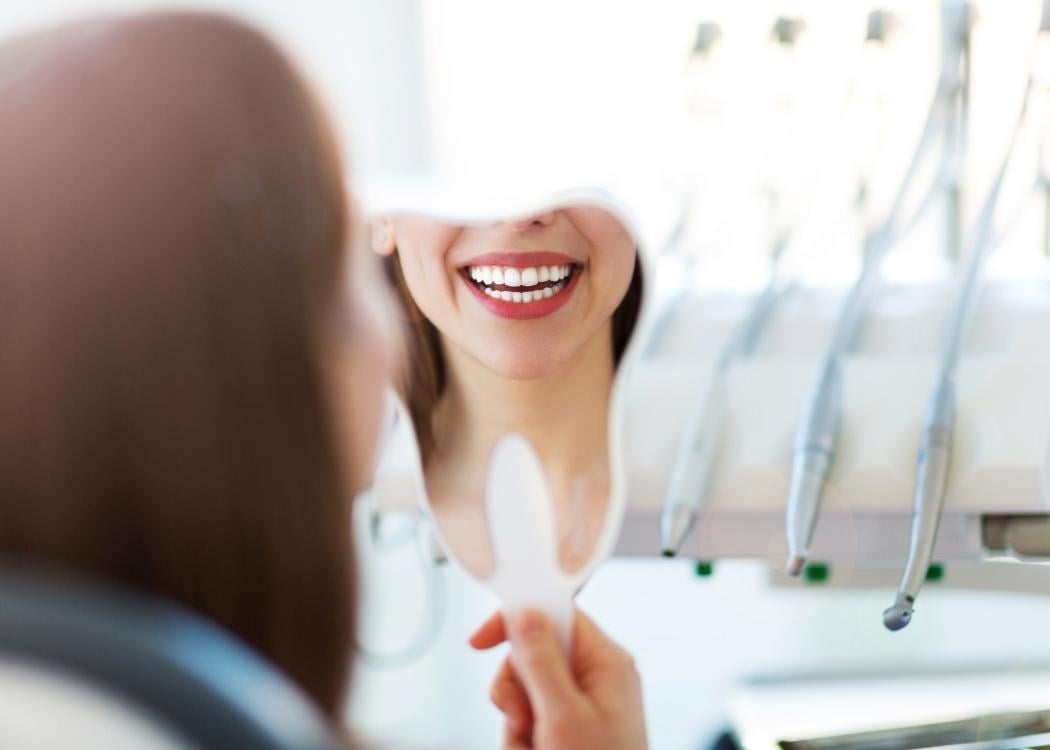
Porcelain-fused-to-metal (PFM) crowns: These crowns combine the strength of metal with the natural appearance of porcelain. The metal substructure provides durability and support, while the outer layer of porcelain gives a more natural tooth color. However, the metal margin near the gum line can sometimes show as a dark line.
All-Ceramic or All-Porcelain crowns:These crowns are entirely made of ceramic or porcelain material, making them an excellent choice for individuals with metal allergies or those who desire a more natural and aesthetically pleasing option. They offer a good level of aesthetics but may not be as strong as PFM crowns.
Zirconia crowns:Zirconia is a strong and durable ceramic material used to create crowns with excellent aesthetics and strength. Zirconia crowns are becoming increasingly popular due to their natural appearance and biocompatibility.
Metal crowns: These crowns are made of various metals, such as gold, silver, or nickel-chromium alloys. Metal crowns are very strong and can withstand biting forces well. However, their metallic appearance makes them less desirable for visible teeth.
Composite resin crowns: These crowns are made from tooth-colored composite resin materials. They are less durable than other types of crowns and are typically used for temporary restorations or short-term solutions.
Stainless steel crowns:Stainless steel crowns are pre-made and often used as temporary crowns for children or for primary teeth. They provide a cost-effective and quick solution for restoring teeth in children.
Brands of the implants and crown types are important things to consider before making a decision. There are not only health concerns but also the cost of the procedure changes depending on your choices. Your service provider should be able to give you some options and enable you to make a comparison of costs between these options. Clinics that are recommended by us aim to provide you with the most suitable choices for you. Fill out the form below and get a FREE consultation in one of the best clinics in Istanbul.
How Long Would All Treatment Take Time?
The timeline for implant and crown procedurescan vary depending on individual factors, such as the patient’s oral health, the need for additional treatments like bone grafting, and the specific dental clinic’s protocols. Below is a general outline of the typical steps involved in the implant and crown procedures and an estimated timeline by days:
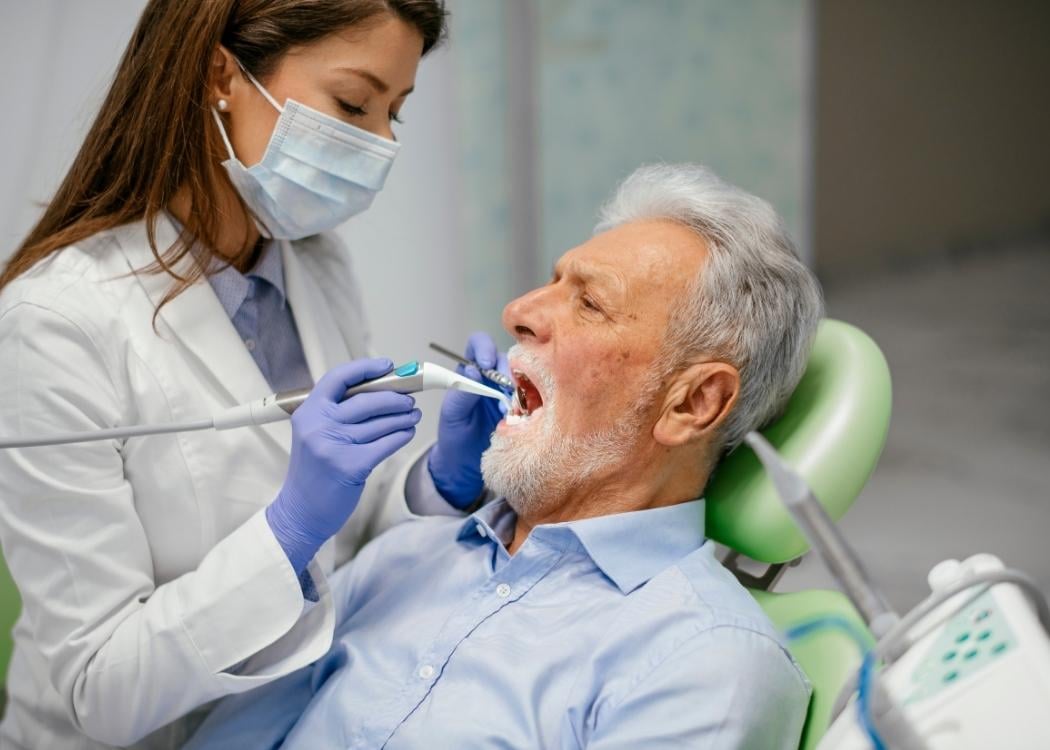
First Visit: Consultation and Examination
The process begins with a comprehensive dental examination, including X-rays and, possibly, 3D scans to assess the jawbone’s condition and determine the suitability for dental implants.
Second Visit: Preoperative Procedures
If the patient requires any preoperative treatments, such as bone grafting or sinus lift to augment the jawbone, it may be scheduled during this time.
Third Visit: Implant Placement
The dental implant is surgically placed into the jawbone during a minor surgical procedure. After the implant placement, a healing period ofseveral months (usually 2-5 months)is often necessary to allow osseointegration – the process where the jawbone fuses with the implant.
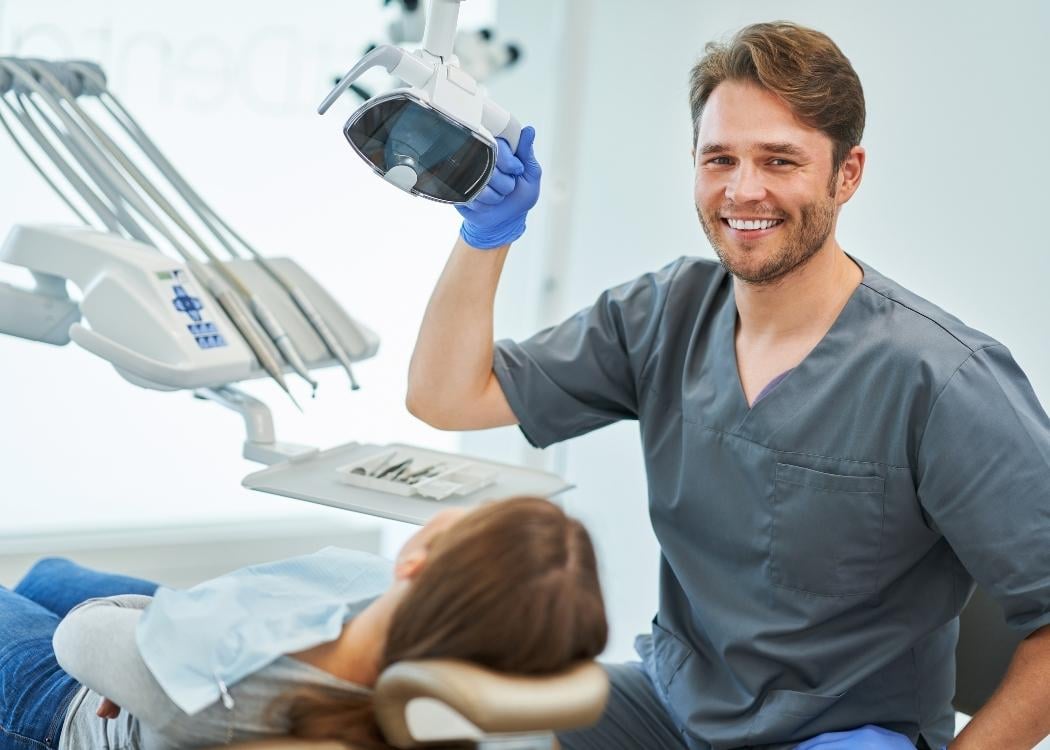
Remember that for dental care treatments after having the implants, it is impossible to proceed to the external lining process right away so for foreign patients it is recommended to come to Turkey two times. During your revisit after your operation, the process will continue as follows.
Before Fourth Visit: Postoperative Healing
During this period, the patient is monitored to ensure proper healing of the surgical site and successful osseointegration of the implant. (in this period consult to your doctor even if you are not in Turkey if you encounter any unrest or pain). It is important to have a dental care clinic you can trust, that’s why we are here for you. Fill out the form below and get a FREE consultation from one of the best clinics in ıstanbul.
Fourth Visit: Abutment placement
Once the implant has integrated with the jawbone, a small connector called an abutment is attached to the implant. The abutment serves as the foundation for the final crown.
Fifth Visit: Impression & Crown replacement
Impression: An impression of the abutment and surrounding teeth is taken to create a custom-made dental crown that perfectly fits the patient’s mouth.
Temporary crown placement:In some cases, a temporary crown may be placed while the final crown is being fabricated in a dental lab.
Sixth Visit: Crown placement:
Once the final crown is ready, it is securely attached to the abutment, completing the implant restoration process of dental care.
What Does the Term “Hollywood Smile” Mean?
Dental treatments can serve both aesthetic and health purposes, and many procedures are designed to address both aspects simultaneously. The right doctor should be able to guide you with ethical concerns and not recommend unnecessary treatment by only taking aesthetic purposes into account. Hollywood smile is currently a popular term referring to the aesthetic benefits of having a dental treatment. Please note that health concerns and aesthetic concernsshould go hand in hand to have the desired results and a happy and comfortable smile. Let’s explore some common dental care treatments and how they contribute to both aesthetics and oral health.
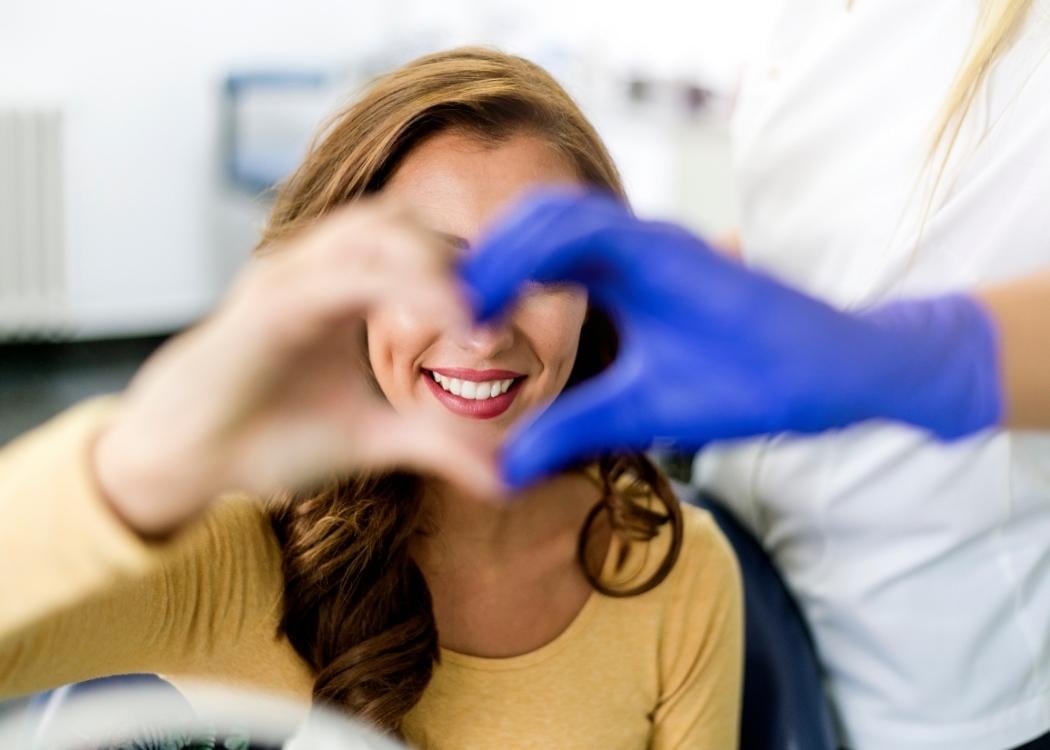
“Hollywood smile” is a term used to describe a specific type of smile that is often associated with the perfect, bright, and flawless teeth typically seen in Hollywood celebrities and movie stars. This smile is characterized by perfectly aligned, white, and symmetrical teeth, which contribute to a radiant and aesthetically pleasing appearance.
Achieving a Hollywood smile usually involves a combination of cosmetic dental procedures aimed at enhancing the appearance of the teeth and smile. Some common treatments that may be used to create a Hollywood smile include; Teeth Whitening, Porcelain Veneers, Dental Crowns, Orthodontic Treatment, Gum Contouring, Dental Implants, and Composite Bonding.
It’s important to note that the concept of a “Hollywood smile” is subjective and can vary from person to person based on individual preferences and cultural norms. What may be considered a perfect smile in one context may not necessarily be ideal in another. For this reason, it’s essential to work with a skilled cosmetic dentistwho can tailor the treatment plan to your unique facial features and smile goals. Meet with the best dentists in Istanbul and have a free consultationby filling out the form below.
Additionally, whilecosmetic dental procedurescan significantly enhance the appearance of the smile, maintaining good oral hygiene and regular dental check-ups are crucial for long-term oral health and the longevity of cosmetic treatments in dental care.
General Information About Dental Care
Dental care health services refer to a range of preventive, diagnostic, and therapeutic dental care services related to oral health. These services can include routine check-ups and cleanings, dental X-rays, fillings and extractions, orthodontics, periodontics, endodontics, and cosmetic procedures. Dental care is important for maintaining good oral health and preventing serious conditions such as tooth decay, gum disease, and oral cancer.
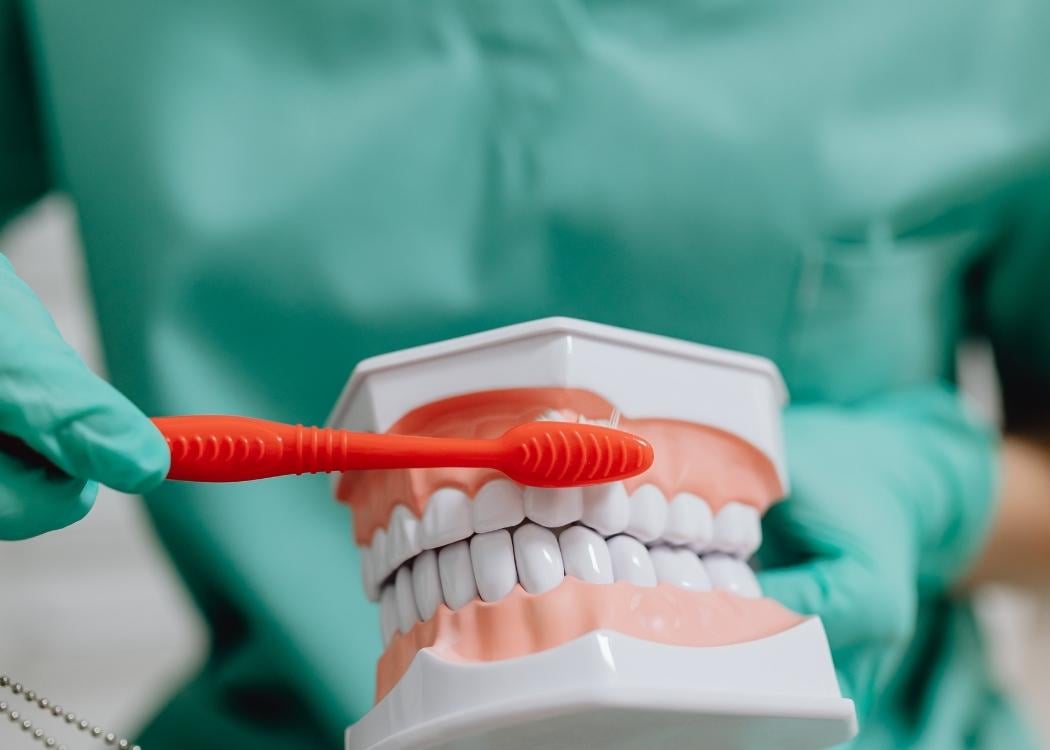
Finding a good dentist or dental surgeon is crucial for ensuring the success and safety of any dental procedure. A qualified and experienced dentist will have the necessary skills, knowledge, and training to perform the procedure correctly and minimize the risk of complications. Additionally, a good dentist will also be able to advise patients on the best course of treatment and provide ongoing support and care to ensure optimal oral health. Do the best for yourself and fill out the form on this page so you can effortlessly meet with great dentists and pick one for your dental care treatment.
Advantages of Dental Care in Istanbul
Location: Istanbul is a large city located in the Marmara region of Turkey, so you’ll have plenty of dental clinics to choose from, no matter where you’re staying.
Types of Services: From routine check-ups and cleanings to more advanced procedures such as dental implants, cosmetic dentistry, and orthodontics, you’ll find everything you need for your dental health in Istanbul. Many clinics also offer specialized services for children, such as preventive treatments and orthodontic treatments.
Technology and Equipment: Istanbul’s dental care clinics are equipped with the latest technology and state-of-the-art equipment, ensuring that you receive the best possible care. From digital X-rays to laser technology, you can trust that your dental health is in good hands.

Qualified Professionals:You’ll find highly qualified and experienced dental care professionals in Istanbul, many of whom have received training and education in countries such as the US, UK, and Germany. You can trust that you’ll be in good hands with these knowledgeable and skilled dentists.
Costs: The cost of dental care in Istanbul is significantly lower than in many western countries, making it a great option for those seeking affordable dental care. However, it’s important to remember that the cost will vary depending on the type of treatment you need and the clinic you choose.
Insurance:Many dental clinics in Istanbul accept international insurance, so be sure to check with your insurance provider to see if they cover treatments in Turkey.
Appointments:You can book appointments at dental clinics in Istanbul either in person or online. It’s a good idea to book in advance to ensure that you get the appointment time that works best for you.
Language: English is widely spoken in Istanbul, so you shouldn’t have any trouble communicating with dental professionals or staff. However, it’s always a good idea to brush up on some basic Turkish phrases, just in case.
In conclusion, dental care in Istanbulis top-notch, offering a wide range of services at an affordable cost. With its state-of-the-art technology, qualified professionals, and high standards of care, you can trust that your dental health is in good hands. So, don’t hesitate to book your appointment today and get ready to say “hello” to a brighter, healthier smile!
This article is not authored by a medical professional; however, it provides a concise overview of various medical procedures sourced from academic papers within the field of medicine. While it does not substitute for expert medical advice, it offers a valuable summary of the information found in scholarly literature, making it a useful resource for those seeking a general understanding of these medical procedures. It is essential to consult with qualified healthcare professionals for in-depth and personalized medical guidance.
References:
- “Clinical Periodontology and Implant Dentistry” by Jan Lindhe, Thorkild Karring, Niklaus P. Lang 2003
- “Contemporary Implant Dentistry” by Carl E. Misch DDS MDS Ph.D. (HC) 2007
- Oxford Handbook of Dental Patient Care by Crispian Scully, Athanasios Kalantzis Series: Oxford Handbooks Series Publisher: Oxford University Press, USA, Year: 2005



